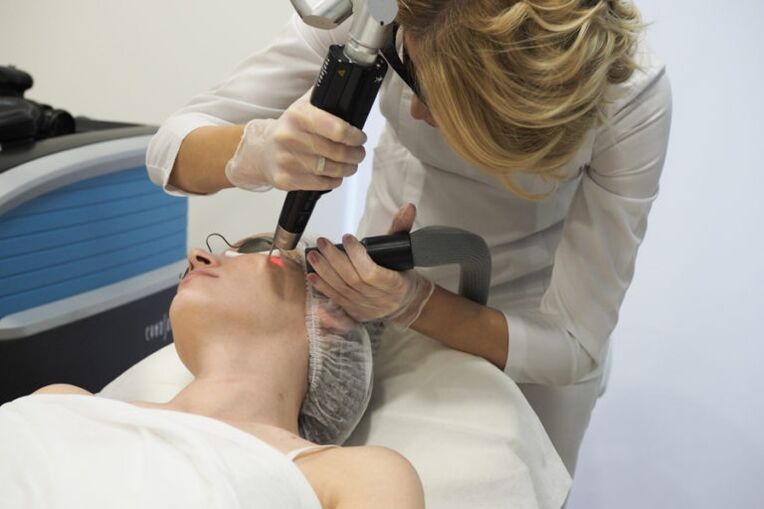Laser rejuvenation is an effective, scientifically proven technique. The beneficial effects of a laser on a given target molecule have been scientifically proven and tested many times.
Laser rejuvenation is a process surrounded by many myths. Some say it’s a great help in coping with many skin blemishes, while others are skeptical that it isn’t. Moreover, it is not a fact that one or the other is indeed a laser and has not undergone an IPL procedure. So what is it really? Does laser rejuvenation help or not?
Rejuvenation, what can a laser do?
Laser treatments are effects of light radiation on the skin that is absorbed only by certain molecules. It:
- intracellular and extracellular water - for CO2 laser;
- oxyhemoglobin, collagen and elastin proteins - for neodymium laser;
- for hemoglobin and melanin dye laser;
- for melanin diode and alexandrite lasers.
By absorbing light, the desired molecule converts it into heat and the latter decomposes. This involves the same reaction in the skin as the injury, resulting in missing elements. New cells and new proteins in the 3D skeleton of the skin are synthesized - the skin tissue is stretched, smoothed and regains its radiance.
If the laser beams were beams, with the distance between the beams (fractional techniques), microdepressions appear in the skin. The fabric tries to connect the edges of these grooves - and thus reduces the area of scars and stretch marks. And when cells containing melanin pigment (the accumulation of which leads to the appearance of age spots) are heated, the natural dye is excreted through the lymphatic system.
The effect described is typical of any type of laser. But here the rejuvenation only ends with the CO2 laser. With the neodymium and dye laser, the visible blood vessels can also be removed: rosacea, dilated veins, wine spots, spider veins.
Will it have no effect?
Laser rejuvenation is a scientifically based technique, it can only have an effect. Explain: any laser target molecule is in our skin. We form collagen and elastin, otherwise the skin would not be able to be on the surface but would slip off. We also have hemoglobin in our blood vessels with oxyhemoglobin - otherwise how the skin would feed. There may be no melanin - but this is only for people with albinism.
The effect of a laser on a specific target has been scientifically proven and tested many times. This is not a blind introduction of the drug - focusing only on the external signs of hyaluronic acid or collagen deficiency. It is the deliberate initiation of an aseptic (non-microbial) inflammation in the skin, to which there is always the same answer: the production of new elements.
Does Laser Rejuvenation Hurt?
Not always. If the procedure is performed with a CO2 laser that evaporates the skin columns, anesthesia is required - until general anesthesia. If the neodymium is used for laser rejuvenation, the procedure is almost painless, as there is no damage to the epidermis and the impulses do not get near the nerve endings but into the microvessels.

If you perform the procedure with a picosecond alexandrite laser that sends 100 times shorter pulses under the skin than on other devices, there will be no pain at all. Why? The situation is that with such a short pulse time, no warm-up occurs - namely, this is the cause of the pain.
How is rejuvenation done then? Multiple picosecond pulses exert a mechanical effect (microblasting of skin scaffold proteins). This triggers the formation of certain substances - cytokines - that transmit information from one cell to another. They support the transformation processes of the skin for a long time.
























